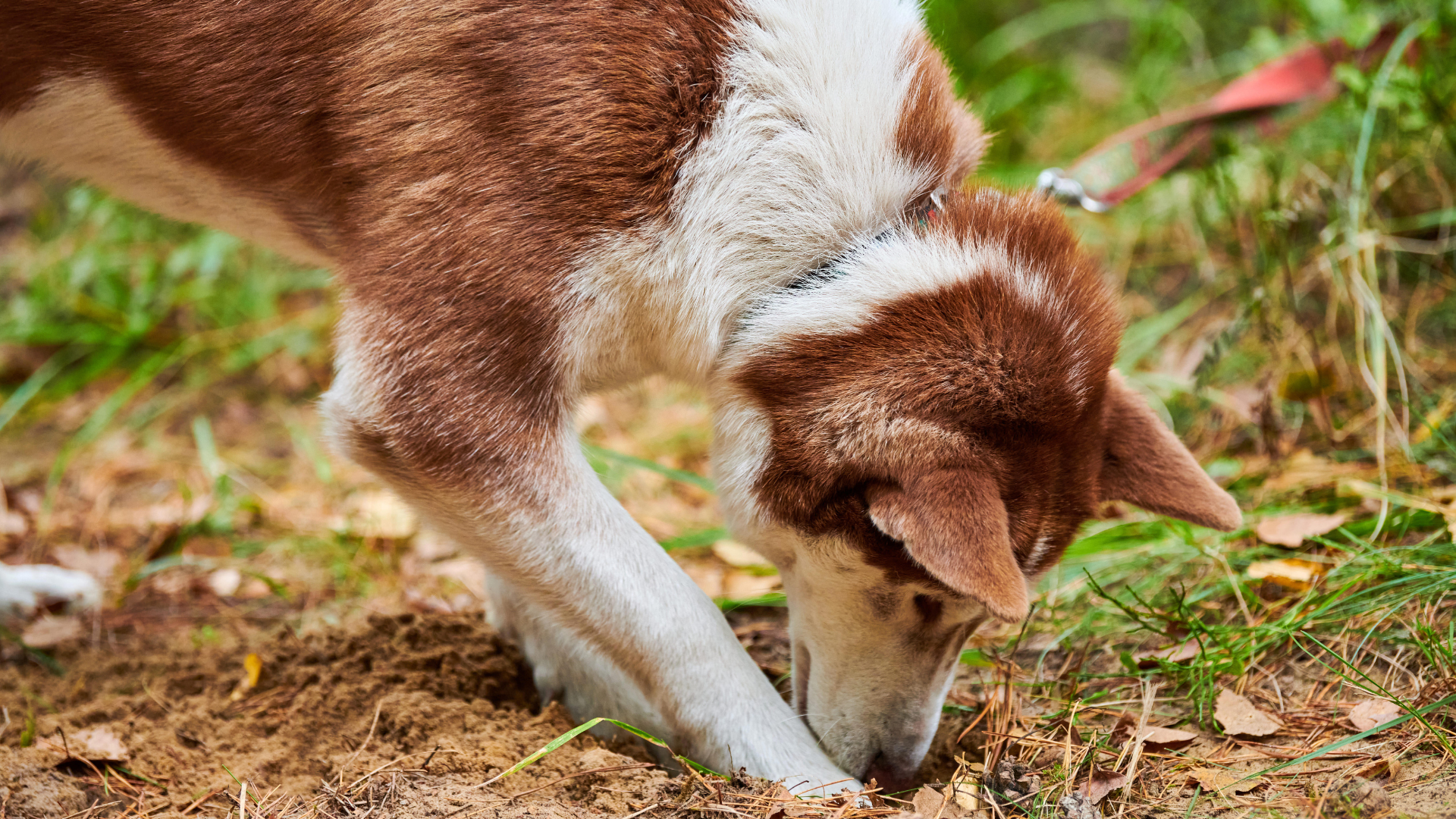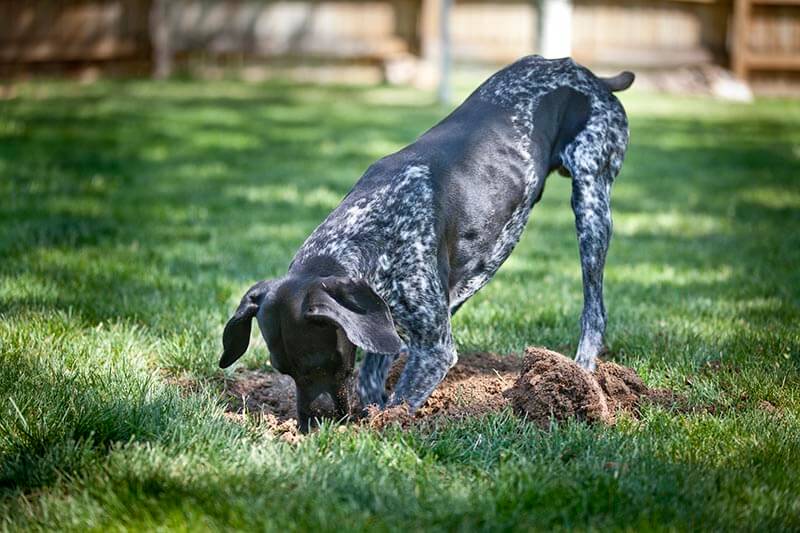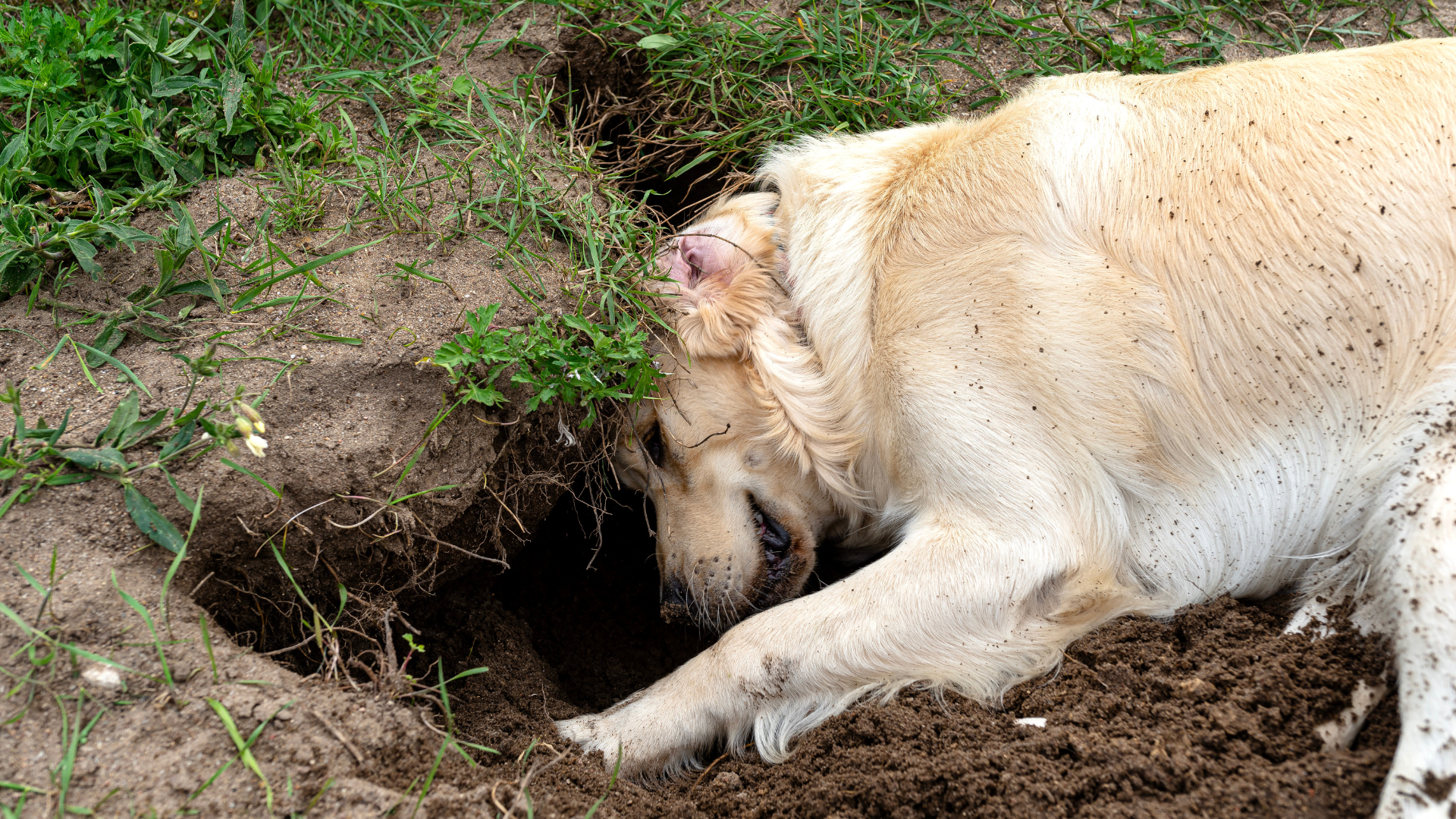Dogs burying bones is a common behavior that has puzzled many dog owners. Some may think that it is a sign of their dog being disobedient or misbehaving. However, this behavior is actually rooted in their instincts and has been passed down through generations of dogs.

One reason why dogs bury bones is that they have an ancestral need to save food for lean times. This instinct has been ingrained in dogs since their early days of hunting for food in the wild. By burying their food, they ensure that they have a future supply of food in case they cannot find any in the near future.
Another reason why dogs bury bones is that it is a way for them to cope with stress or anxiety. Some dogs may bury their toys or bones as a way to comfort themselves when they are feeling overwhelmed or anxious. This behavior can also be a way for them to escape from a stressful situation or to hide their prized possessions from other animals.
Instinctual Behaviors
Dogs have been domesticated for thousands of years, but they still have many instinctual behaviors that can be traced back to their wild ancestors. One of these behaviors is the tendency to bury bones and other objects.

Ancestral Traits
Dogs are descended from wolves, who would often bury food in order to save it for later. This behavior was essential for their survival, as it allowed them to store food during times of plenty and then dig it up when food was scarce. This instinctual behavior has been passed down to modern-day dogs, who will often bury bones and toys as a way of saving them for later.
Survival Mechanisms
Burying objects is not just a way for dogs to save them for later, it can also be a survival mechanism. In the wild, dogs may need to hide food or other objects from other animals in order to keep them safe. By burying these items, they are able to keep them hidden from other animals and protect them from being stolen.
While burying objects is a natural behavior for dogs, it can also be a sign of anxiety or stress. Some dogs may bury objects as a way of self-soothing, while others may do it out of boredom. It is important for owners to understand why their dog is burying objects and to address any underlying issues that may be causing this behavior.
Practical Reasons
Dogs bury bones for practical reasons, which include preservation of food and hiding resources from predators.
Preservation of Food
Dogs have a natural instinct to bury food as a way of preserving it for later consumption. This instinct stems from their ancestors who had to hunt for their food and store it for times when prey was scarce. By burying their bones, dogs are able to keep them fresh and safe from other animals that may try to steal them.
Hiding Resources from Predators
Dogs also bury bones as a way of hiding resources from predators. This instinct is deeply rooted in their DNA, as their ancestors had to protect their food from other predators in order to survive. By burying their bones, dogs are able to keep them safe from other animals that may try to steal them. This behavior is especially common in dogs that live in areas with a high population of predators.

Overall, dogs bury bones for practical reasons that are deeply rooted in their DNA. By burying their bones, they are able to preserve their food and hide resources from predators. This behavior is completely normal and should not be a cause for concern.
Behavioral Factors
Dogs burying bones is a behavior that can be attributed to several factors, including their natural foraging instinct and their desire to play and train.
Natural Foraging Instinct
Dogs are descendants of wolves, who were natural scavengers and hunters. As a result, dogs have inherited the instinct to bury food and other resources for later use. This behavior is also seen in wild canines, who bury food to keep it safe from other animals and to ensure a future food source.
In domesticated dogs, this behavior is often seen when they have an excess of food or treats. They may bury these items in the yard or hide them in the house for later use. This behavior can be helpful in ensuring a steady food supply for the dog, but may also lead to problems if the dog forgets where they buried the item or if the item begins to rot.
Play and Training
Dogs may also bury bones and toys as part of their play and training. Burying and digging can be a fun and engaging activity for dogs, providing them with an outlet for their energy and curiosity. Some dogs may also bury items as part of a game of hide-and-seek with their owners, or as a way to initiate play.
In addition, burying and digging can be a form of training for dogs. Many working breeds, such as terriers and hounds, were bred to hunt and dig. Burying and digging can help these dogs hone their natural skills and instincts, making them better hunters and trackers.
Overall, the behavior of dogs burying bones can be attributed to a combination of natural instincts and learned behaviors. Understanding these factors can help dog owners better understand their pets and provide them with the appropriate outlets for their energy and curiosity.
Psychological Aspects
Dogs' behavior of burying bones is not only related to their ancestral instincts but also has psychological aspects. Here are some of the psychological reasons why dogs bury their bones.

Anxiety and Stress Relief
One of the reasons why dogs bury bones is to relieve their anxiety and stress. According to The Spruce Pets, dogs that are feeling anxious may bury items to calm themselves since digging is a self-soothing behavior. This behavior can be seen in dogs that have separation anxiety or are in a new environment.
Furthermore, Rover.com explains that bone burying can provide bored dogs with a way to initiate play with their pet parents. Digging can provide them with an enjoyable outlet for their energy and curiosity, which can help relieve stress and anxiety.
Territorial Instincts
Another psychological aspect of why dogs bury bones is related to their territorial instincts. Dogs are territorial animals, and burying bones can be a way for them to mark their territory. By burying their bones, dogs can protect their resources from other animals and keep them safe for later.
Moreover, iHeartDogs explains that burying bones is a way for dogs to hide their food from other animals and predators. This behavior is deeply ingrained in their ancestral past, where they had to compete for food and resources to survive.
In conclusion, dogs bury bones for various reasons, including psychological aspects such as anxiety and stress relief and territorial instincts. Understanding why dogs bury their bones can help pet owners provide their furry friends with a more comfortable and stress-free environment.
Influence of Domestication
Domestication has had a significant impact on why dogs bury bones. While their ancestors had to hunt for their food and store it to survive, domesticated dogs don't have to worry about their next meal. However, the instinct to bury food is still present in many dogs, and they continue to do so even if they don't need to.
Owner Influence
Owners can also influence their dogs to bury bones. If owners give their dogs treats or bones, they may encourage them to bury them as a way of keeping them safe. This behavior can also be reinforced if the owners praise their dogs for burying their bones.
Environmental Factors
Environmental factors can also play a role in why dogs bury bones. For example, if a dog lives in an area with many predators, it may bury its food to keep it safe. Additionally, if a dog lives in an apartment or small house, it may bury its food as a way of hiding it from other animals or people.
Overall, domestication has changed the reasons why dogs bury bones, but the behavior is still present in many dogs. Owners and environmental factors can also influence this behavior, but it ultimately comes down to the dog's instincts.

Conclusion
Dogs burying bones is an instinctual behavior inherited from their wild ancestors, serving practical and psychological purposes. This practice helps dogs preserve food, manage stress, and protect resources from potential threats. Understanding why dogs engage in this behavior can enhance our approach to pet care, allowing us to provide environments that respect their natural instincts and address their needs.
Recognizing the deeper significance behind such actions helps prevent misunderstandings and improves the bond between dogs and their owners. By appreciating these ancestral traits, we can support our canine companions in maintaining a balance between their instinctual behaviors and the demands of domestic life.






